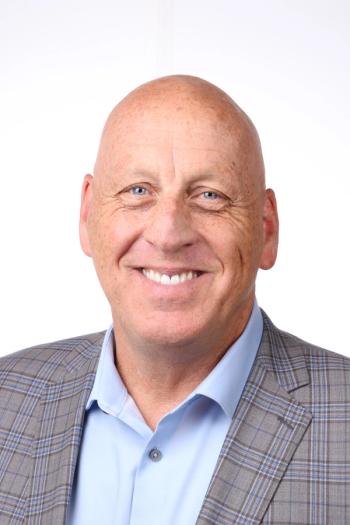
Understanding Smoldering Multiple Myeloma

Transcript:
Kristie L. Kahl: Can you explain what smoldering myeloma is?
Dr. Irene Ghobrial: Many patients come in to see us because they have back pain or anemia or kidney problems; however, if we know that every single patient who comes to see us with multiple myeloma likely had five years, 10 years of a precursor condition – meaning they were asymptomatic. They did not have any problems, but they also had the same cancer cells and the same protein in their blood. We don't look for it because we don't screen for multiple myeloma and that's something we're changing now with the PROMISE study.
When we identify those patients and they have more than 10 cancer cells in their bone marrow, we call this smoldering multiple myeloma and the name is exactly right. They're almost going to myeloma, they're almost on fire, and the question is what leads to that progression: How often do those patients go on to develop myeloma? Are they at high risk of developing it or not?
So when I see someone who's doing great, who has no anemia, no lesions in their bones and doing well but they have a protein in their blood. They have myeloma cells in their bone marrow. Their first question is: Yes, I have this smoldering multiple myeloma but what's my risk of progression to active disease and should I do something about it?
Kristie L. Kahl: Can you discuss what monoclonal gammopathy of undetermined significance, or MGUS, is?
Dr. Irene Ghobrial: MGUS is the one step before smoldering myeloma. If we look at the spectrum of the disease, people usually have MGUS first and then smoldering myeloma if they progress and then active myeloma. MGUS is basically the number of cells, if there is less than 10, although this is very arbitrary. MGUS risk is very small so that's why we differentiate them because the chance of progression from MGUS to myeloma is only 1% per year .
Kristie L. Kahl: So what is the risk for smoldering myeloma to progress and how long can this happen after you receive a small during myeloma diagnosis?
Dr. Irene Ghobrial: We don't know how many people have smoldering myeloma. If we think about the general population, we know that MGUS, or potentially smoldering myeloma, is actually very common – 5% of the population over the age of 50 are more common to have it; the African American population; or first-degree relatives of myeloma.
We start asking, well all of these people who are asymptomatic, how many of them would actually develop myeloma? How can we predict who will progress or not if I am today coming in to see a doctor and I have more than 10 plasma cells, I'm freaking out. I'm saying, okay I have myeloma right now, what are my chances of going in and having a fracture of my bones or having kidney damage.
The first thing to make sure is you don't have active myeloma yet but you're at risk. And the question is: What is that risk we look at clinical factors, what we call clinical markers, of progression – meaning the percentage of bone marrow cells, the light chain ratio, the protein in the blood, how high it is. And now we know that we also have genomic factors, meaning the type of cancer cells, are they aggressive? Do they like to grow very fast or are they just sitting around and growing very slowly? And they don't have a problem of waiting years and years before they cause damage.
Kristie L. Kahl: What is the current standard of care?
Dr. Irene Ghobrial: It’s a huge controversy and we still don't have a good answer. I think the most important thing is seeing a specialist, seeing someone who really works in that field especially in the smoldering myeloma field because that's the area where we're all trying to understand how do we predict progression. Are the current markers enough or do we need new markers? And how do we do as far as treatment for those patients? Do we treat them or not? I would advocate that we see a doctor, we consider clinical trials, because there is no right or wrong answer. There are so many questions to be answered in the future.
Kristie L. Kahl: How often should patients with smoldering myeloma be seeing their doctors?
Dr. Irene Ghobrial: Watching and waiting is such a hard thing for many patients. In fact, they call it watch-and-worry. If I know that I have some cancer cells in my bone marrow, why do I have to wait until there is a lot of those cells? Do we have the right answer of which treatment should we use is also another problem.
There have been clinical trials of using Revlimid (lenalidomide) and dexamethasone or lenalidomide alone, which have shown benefit, but we don't know who those patients are, who would truly benefit from it. Is there a risk of taking those therapies early on?
So, I would have a discussion with my doctor. And if the answer is, I'm not going to go on therapy now or on a clinical trial, that at least being observed every three months being very careful on knowing that I don't have organ damage. Seeing my doctor all the time is important and that would be true for anyone even if they had 10 years of follow-up because myeloma can happen at any time. Many people will tell me I've been seeing you for five years so I'm going to stop seeing you because the risk of progression goes down after five years and the answer is that's not true. The the risk of progression can still happen at any time.
Kristie L. Kahl: What is your biggest recommendation for a patient who has received a smoldering myeloma diagnosis?
Dr. Irene Ghobrial: I think that myeloma is such a rare entity. Smoldering myeloma iseven smaller. And knowing who your expert is in that field is very important, and whether your local doctor wants to refer you for a second opinion is very important, too. I think just having that connection with a doctor. I always say that if you have a problem in your house, you get an expert in that area. And your own body is more important than anything else in the world. You want to be your own advocate. You want to say, I’m going to go get the best of the best and make sure that I'm getting the best treatment for myself. Make sure that this advocacy, whether it's from yourself, from your family members, is available for you. These days, we're doing telemedicine. We're available for many people to give them opinions and making sure that they are on the right track, even if they don't want to come to see us in person.
Kristie L. Kahl: How can patients with smoldering myeloma learn more about their diagnosis and the potential progression?
Dr. Irene Ghobrial: There are so many things. One of them, of course, is education. As you said, going online understanding the literature, talking to the experts in the field, getting to be part of some of those webinars and discussions that we have. But also getting your own information and your own data and that comes to the question of what are my genomic alterations? What is going on in my own cancer cells? This is where collaborations we have for the PROMISE study that we've developed at Dana Farber, and the CURE Cloud at the MMRF is the best thing because we are giving back information to the patients so that they can actually get access and empower themselves with that information.
Kristie L. Kahl: Are there any trials that patients have to look forward to in the future?
Dr. Irene Ghobrial: There are so many options we are developing right now. There are ongoing
clinical trials including three drugs, including phase three studies, ongoing for registration purposes. But I would say that not every trial is the right trial for that person. And this is where you decide and pick and choose with your doctor or with us if you want help. We can help you in deciding what's the right drug for you. Precision medicine is here. When I have myeloma, I don't want to be on any drug. I want to be on a drug that works for me specifically.
Kristie L. Kahl: What would you say is your biggest piece of advice for a patient who has been diagnosed with smoldering multiple myeloma?
Dr. Irene Ghobrial: There’s a lot of controversy. There is a lot of unknown. Every patient is actually helping himself or herself but also helping the future to change multiple myeloma and how we treat patients. I would say get into knowing an expert, working with them closely, being your own advocate because someday we will treat patients earlier and potentially cure myeloma by early interception.
Transcription edited for clarity.





